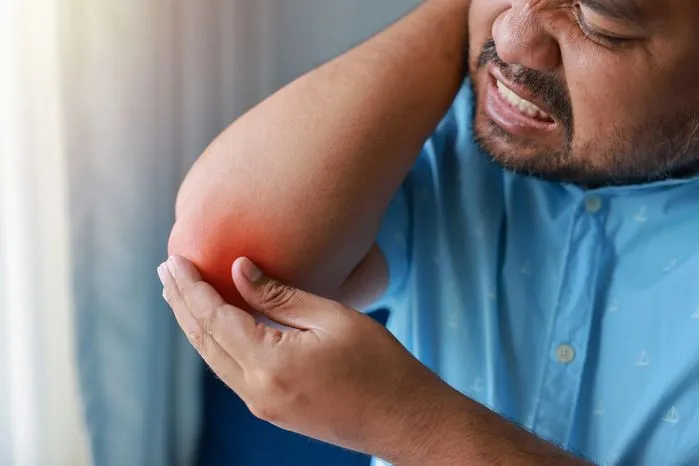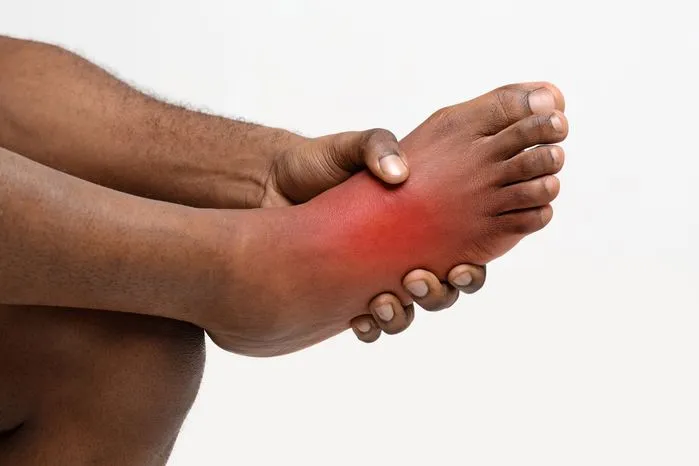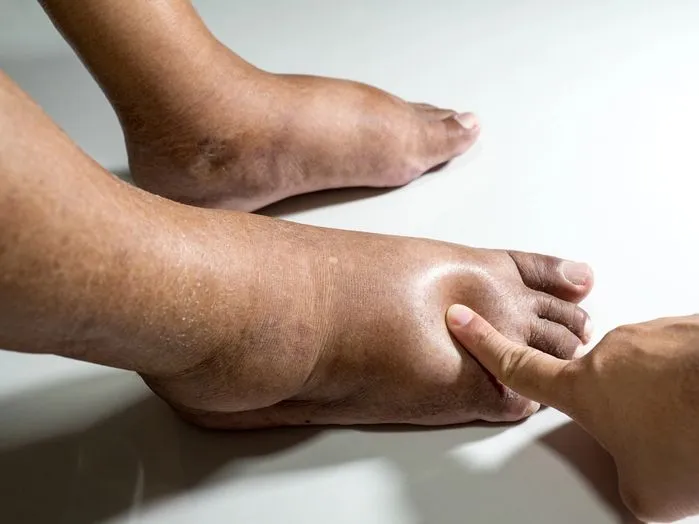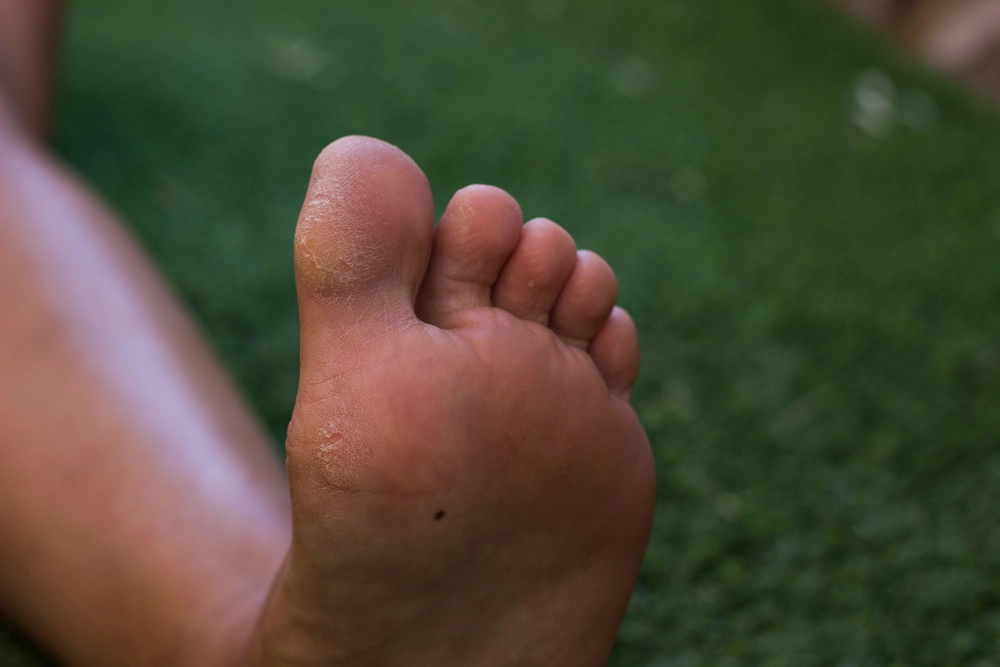
Claw Toe Deformity: Expert Insights from The Releford Foot and Ankle Institute
At The Releford Foot and Ankle Institute, we frequently treat patients who notice their toes curling downward, stiffening, or making it difficult to walk. Many assume it’s just a cosmetic issue or part of aging, but claw toe deformity is often a sign of underlying nerve or muscle imbalances that can worsen over time.
💡 Key Insights from Our Foot & Ankle Specialists:
✔️ Claw Toe Is More Than Just a Bent Toe – It often results from nerve damage (neuropathy), muscle imbalances, or prolonged pressure from ill-fitting shoes.
✔️ Early Intervention Prevents Long-Term Damage – We’ve seen cases where untreated claw toe leads to joint stiffness, corns, ulcers, and difficulty walking.
✔️ Treatment Should Be Personalized – Many patients assume surgery is the only option, but in many cases, custom orthotics, targeted exercises, and footwear modifications can slow progression and improve function.
🔍 Who Is at Risk for Claw Toe Deformity?
Diabetic patients and individuals with nerve damage or poor circulation
People who wear tight or high-heeled shoes for extended periods
Athletes and those with foot injuries leading to muscle imbalances
🔹 How We Treat Claw Toe Effectively:
🔹 Custom orthotics and foot strengthening exercises to restore balance
🔹 Minimally invasive treatments to relieve pain and prevent worsening
🔹 Advanced surgical options for severe or rigid deformities
At The Releford Foot and Ankle Institute, we take a comprehensive, patient-centered approach to claw toe treatment, ensuring that each patient receives a personalized plan for long-term mobility and comfort. This guide explains the causes, warning signs, and most effective treatment options to help you walk pain-free again.
Key Takeaways
- Abnormal positioning of toe joints, known as claw toe deformity, leads to discomfort, pain, plus balance problems.
- Various medical conditions and events trigger this condition.
- Symptoms like bird's claw-shaped toes, corns, calluses, and intensified pain or irritation with shoes on are evident signs.
- Without treatment, patients face potential worsening pain, changes in foot structure permanently, increased fall risk, plus surgical risks such as infection or nerve damage.
- Orthotic devices, exercises for flexibility and strength enhancement, along with surgery in severe cases such as tendon transfer, arthrodesis, or metatarsal osteotomy are viable treatment options.
Understanding Claw Toe Deformity
Characterized by abnormal toe joint positioning, claw toe deformity is a condition that provides a unique case study in foot anatomy. Your feet, complex structures consisting of 26 bones, and 33 joints, along with a multitude of tendons, ligaments, and muscles, are vital for mobility. Harmonious interaction between these components ensures foot health. Disruptions can, however, lead to conditions such as claw toe deformity.
High arches, specific arthritis types, and diabetes, which may damage foot nerves, are among the factors causing claw toe deformity. Improper footgear, especially shoes that force toes together or high heels shifting body weight onto toes, contributes to this condition as well.
In most instances, claw toe deformity starts flexible and slowly stiffens. To avoid permanent toe bending, early intervention is crucial. With a full grasp of foot anatomy and the causative factors, patients along with health practitioners collaboratively devise effective treatments for managing claw toe deformity.
"Claw toe deformity, often likened to a bird’s foot, arises from nerve damage, genetics, or improper footwear, leading to discomfort and mobility challenges. Early intervention with orthotics, exercises, or surgery in severe cases can prevent permanent damage and restore foot function."
Signs To Look Out For
Recognizing symptoms is crucial for successful management. One clear symptom is the toe's unique shape, similar to a bird's claw. Toes affected by this condition bend upwards from the ball-of-the-foot joints and downwards at the middle joints, sometimes curling under the foot. Such abnormal positioning causes extreme pain and irritation, especially when wearing shoes.
Spotting these symptoms early allows for more effective treatment, including non-surgical options and lifestyle changes. Non-surgical treatments aim to relieve pain and discomfort, which may involve padding, using appropriate footwear, or incorporating shoe inserts. Lifestyle changes may include toe-strengthening and stretching exercises.
Knowing these symptoms marks the beginning of managing claw-toe deformity. With this understanding, you get prompt medical advice and explore potential treatment options, thereby enhancing your life quality.
Common Causes of Claw Feet
Knowing the underlying causes of claw feet proves crucial for accurate diagnosis and subsequent treatment. This abnormal toe curvature condition has multiple origins.
Genetic factors rank among the most prevalent causes. There are individuals whose genes predispose them to claw feet, a sad reality dealt with by nature. If claw feet are prevalent in your family history, your likelihood of developing this condition rises substantially.
Next in line of causative factors is inappropriate footwear. Shoes that do not fit well, especially if they cramp the toes, induce claw feet. High heels and pointed shoes often contribute to this condition.
Additional factors that may result in claw feet encompass:
1. Certain health conditions like diabetes, capable of inflicting nerve damage on feet
2. Alcoholism, another cause of nerve damage
3. Injuries to feet or ankles
Potential Complications and Risks
Individuals with claw feet face potential challenges and risks if not managed properly. Untreated claw-toe deformity may intensify pain and discomfort, hindering basic tasks like walking or running. Corns and calluses could develop due to abnormal pressure on the foot.
Severe long-term effects usually occur from this condition. Ignored claw toe deformity may result in permanent alterations in foot structure and mobility issues. Balance and coordination problems may arise, escalating the risk of falls and injuries.
Varied progression and complications of claw toe deformity exist among individuals. Influencing factors include deformity severity, overall health of the patient, and effectiveness of condition management, all of which greatly affect potential risks and complications.
Treatment Options for Claw Toe Deformity
Claw toe deformity, despite its potential complications and risks, does not mean the end of comfort. Multiple treatment options exist to improve this condition, boosting life quality. These treatments vary from lifestyle adjustments to surgical procedures, depending on deformity severity and progression.
Orthotic devices, often used as initial treatment, offer support and cushioning to relieve discomfort and inhibit further deformity. Routine stretching, coupled with strengthening exercises, forms the backbone of non-surgical treatment.
Should non-surgical treatments offer insufficient relief or if the case proves severe, surgery might be required. Such surgical interventions can include:
1. Tendon transfer: This procedure repositions tendons forcing toes into claw-like positions.
2. Arthrodesis: This technique fuses clawed toe joints, improving alignment.
3. Metatarsal osteotomy: Surgeons correct metatarsal bone position through this operation.
Supporting Facts and Statistics
According to the National Library of Medicine, neurological disorders such as cerebral palsy, Charcot-Marie-Tooth disease, and other conditions affecting the brain and nervous system often cause claw toe deformity. Muscle imbalances in these conditions lead to the development of toe deformities.
The U.S. Department of Veterans Affairs stated that diabetes raises the risk of claw toe deformities as diabetic neuropathy weakens foot muscles and disrupts balance. Muscle imbalances then lead to claw toes.
In addition, the U.S. Department of Veterans Affairs cited that claw toe deformities create excessive pressure on the toes and ball of the foot, leading to corns and calluses. These pressure points elevate the risk of foot ulcers, especially for individuals with diabetes.
Releford Institute’s Opinion on Clawed Toes and Feet
This prevalent foot condition often results from factors like nerve damage, diabetes, or unsuitable shoes. Distinctive bending of toes marks its presence, leading to discomfort and hampering mobility. At RelefordInstitute.com, we believe that without treatment, serious complications may arise from this condition. Fortunately, numerous treatments exist, ranging from non-invasive methods like physiotherapy and orthotic devices to surgical procedures in extreme situations.
Frequently Asked Questions
What is the cause of a claw toe?
A claw toe is caused by nerve damage from diseases like diabetes or alcoholism, which weakens the muscles in the foot. The weakened muscles cause the toes to contract and dig into the soles of the shoes, leading to painful calluses.
How do you fix a claw toe?
Fixing a claw toe can involve several methods. Initially, it is recommended to wear shoes with more room or use shoe inserts to alleviate pressure and discomfort. In severe cases, a doctor might suggest surgery to straighten the toe.
What is the difference between claw toe and hammertoe?
Claw toe and hammertoe are both conditions that can cause deformities in the toes, but they affect the toes in different ways. While a claw toe causes an upward bending of the toe at the first joint and downward at the second, creating a claw-like appearance, a hammertoe involves a bend in the middle joint of the toe, resembling a hammer.
What does it mean to have a claw toe?
Having a claw toe means that your toe is bending upwards at the first joint and downwards at the second, giving it a claw-like appearance. This condition is often associated with discomfort and difficulty in walking.
Is there a cure for claw toe?
Yes, there is a cure for claw toes. Non-surgical treatments involve wearing roomier shoes and using shoe inserts, while more severe cases may require surgical intervention to straighten the toe.
What neurological conditions cause claw toes?
Certain neurological conditions like Charcot-Marie-Tooth disease, stroke, or cerebral palsy can cause claw toes. These conditions can lead to muscle weakness or imbalance, causing the toes to contract into a claw-like position.
Can a podiatrist fix claw toes?
Yes, a podiatrist can fix claw toes. They can recommend suitable treatments like orthotics, exercises, or surgery based on the severity of the condition.
Is claw foot a disability?
Clawfoot, or pes cavus, is not considered a disability in itself. However, it can cause discomfort and mobility issues which, in severe cases, might qualify as a disability under certain criteria.
Is claw toe reversible?
Claw toe is reversible, especially if treatment is started in the early stages of the condition. Non-surgical treatments like wearing roomy shoes and using shoe inserts can help, but severe cases may require surgery.
What is toe-curling a symptom of?
Toe-curling is often a symptom of neurological disorders like Parkinson's disease or peripheral neuropathy. It can also be due to muscle imbalances or deformities like claw toe or hammertoe.
Do claw toes affect balance?
Yes, claw toes can affect balance. The altered shape and position of the toes can make walking difficult and increase the risk of falls.
Can you reverse hammer toe?
Yes, you can reverse hammertoe, especially if detected and treated early. Non-surgical treatments include exercises to stretch and strengthen the muscles and wearing roomier shoes. In severe cases, surgery may be necessary.


















